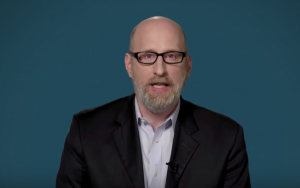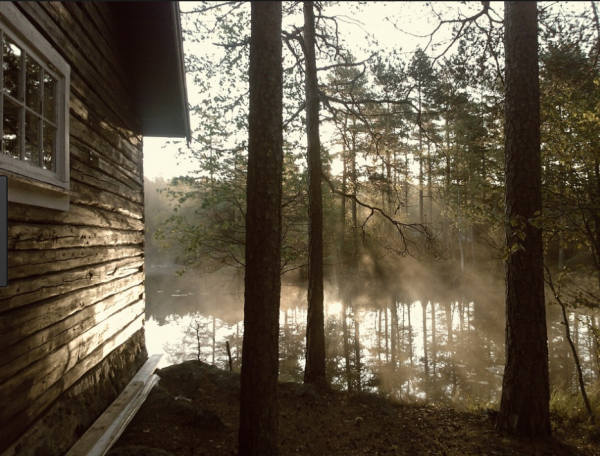
Guest post by Bill Blankschaen
We tend to evaluate our life story by what we can see apart from faith, instead of by what we can see when faith opens our eyes. That’s only natural. But when we consider reality from God’s point of view, we start identifying the blind spots that keeping us from living a story worth telling.
“The things that can be seen don’t last, but the things that can’t be seen are eternal” (2 Corinthians 4:18). According to this counterintuitive truth, if you can see something with your physical eyes, it is already in the process of fading away.
Money in the bank account, houses in suburbia, granite memorials, works of art, corporate success, exquisite gardens, scrumptious food, charitable foundations, even Disney World: if you can see it, you’re already losing it.
This is not to say that we can’t enjoy them all in the meantime, but living a life consumed by them will one day leave us with nothing.
Why Can’t We See Straight?
Distinguishing between the temporary and the eternal, the seen and the unseen, wasn’t always so difficult for us. When we were created, we understood the distinction between the two.
God created us to tend a physical world of “the seen,” yet we walked in close relationship with him who defines “the unseen.” When in Eden we chose to focus our faith on ourselves instead of him, our ability to distinguish between the two vanished almost completely.
Because we were made in God’s image, we didn’t entirely lose our awareness of “the unseen,” but “the seen” now dominated our perspective. But when Christ does his mightiest work of restoring us by faith to right relationship with him, he calls us “out of darkness into his amazing light” (1 Peter 2:9).
We now can see, and not just as we did before, but better, as if through corrective lenses. Thanks to God’s detailed revelation and the power of the Holy Spirit within us, we can see more than even Adam and Eve saw of “the unseen.”
“The seen” can still block our view, but only if we let it, for faith has now opened our eyes.
Eventually, those of us whose hearts have been transformed by faith will rejoin our Maker, and our faith will become sight. In other words, one day there will no longer be any distinction between “the seen” and “the unseen” for “we’ll see him as he is” (1 John 3:2). His reality will become our reality: “For now we see a reflection in a mirror; then we will see face-to-face” (1 Corinthians 13:12).
5 Steps for Getting Rid of Your Blind Spots
Someday, for those whose faith is rightly focused, making that distinction will no longer be an issue.
Until then, here are five practical steps we can take right now to get rid of blind spots in our faith so we can live a story that is truly worth telling where and when it matters most:
- Acknowledge your perspective is not perfect. No one has unobstructed vision, at least not on this side of eternity. Know that each person’s faith is defective in some way, often difficult to identify. We’ve all got blind spots. And, by definition, we can’t see them.
- Engage in healthy self-examination. Check yourself regularly by intentionally inspecting what you see from numerous perspectives. Measure what you see against what you believe to be true about God. When criticizing others, start with the phrase, “I may be missing something here…”
- Beware of sudden disappearances. When you are thinking about certain topics, do you find yourself shutting down or withdrawing from discussions with others? You may be avoiding issues you need to see more clearly. Shine a spotlight on those areas and deal with what you see.
- Visit with a vision specialist. Sometimes it takes a specialist to see what you can’t. Enlist the help of a pastor or trusted advisor who shares your beliefs, has experience as a FaithWalker, and will speak the truth to you in love. Don’t just seek out advisors who will agree with you. That’s so 7th grade.
- Wear corrective lenses. Borrow someone else’s perspective on a regular basis to double-check your own take on life. Surround yourself with a community of FaithWalkers who will tell you the truth about what they see. You were not designed to take this journey to live a story worth telling all by yourself.
When we refuse to walk by faith, we choose a story confined to “the seen,” a fleeting tale already in the process of fading even as we live it. The best of us will leave little trace of our existence once our time has come and gone.
But faith opens your eyes to the reality that we were not created just for the present but for the future. That truth is what must guide how we live our story, for that is where our story will prove to be worth telling.
Right now, our story fades a little more each day in spite of our best efforts to ensure it cannot be forgotten. But when we live for what is coming, our story can be one we never tire of telling, one that God himself will be proud to share.
If only we have the faith to see.
Learn more about how to live an authentic life of abundant faith. Click here now to get your copy of A Story Worth Telling.

Bill Blankschaen is a writer and speaker who blogs at Patheos on faith and culture (Faithwalkersblog.com and at FaithWalkers.com with practical help for living the authentic Christian life. This post is adapted from his latest book A Story Worth Telling: Your Field Guide to Living an Authentic Life. For a limited time, he is giving away a chapter of his book for FREE and the entire book for FREE to pastors and ministry leaders only. Connect on Facebook and Twitter.










